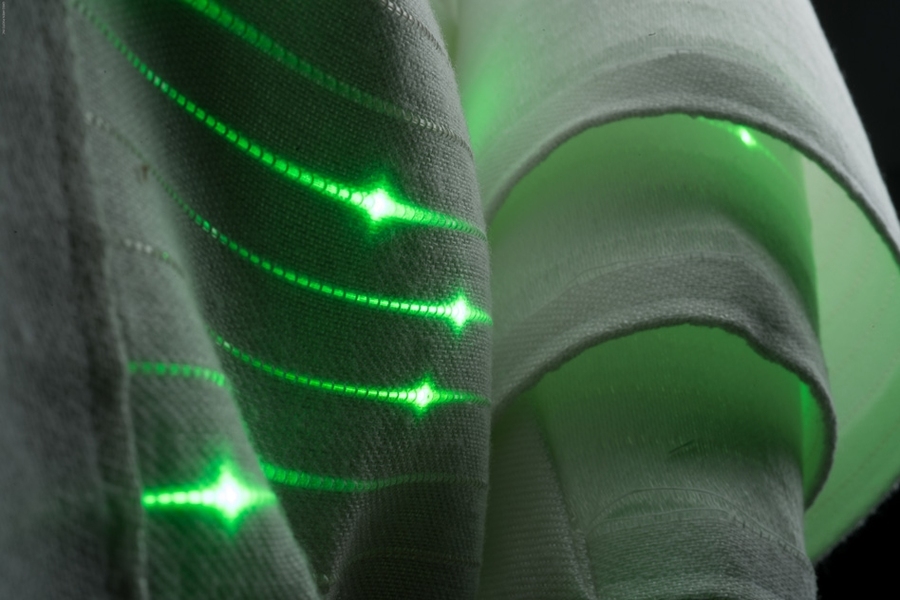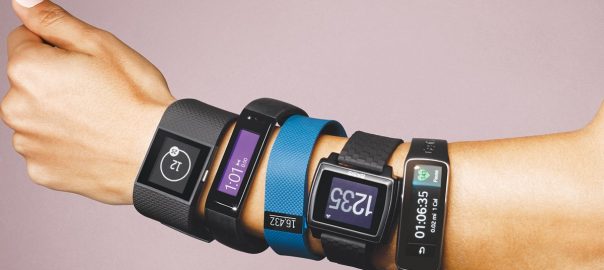Wearable fitness tech has come a long way in the last decade. From basic pedometers to advanced smartwatches and fitness trackers, these gadgets now offer detailed insights into our physical activities, heart rate, sleep, and even stress levels. But what if there’s an entirely new frontier waiting to be explored? Enter smart fabric — a revolutionary material that could change the way we monitor and improve our health, blending the convenience of wearables with the comfort and functionality of clothing.
What is Smart Fabric? Smart fabric, also known as e-textiles, is material that incorporates conductive fibers or sensors that can collect and transmit data. This fabric can be woven into various types of clothing, such as shirts, pants, socks, or even sports bras, making it an unobtrusive way to monitor health in real time.

In contrast to the chunky, rigid devices we often strap to our wrists or clip onto our clothes, smart fabrics could integrate seamlessly into our daily wardrobe. Imagine tracking heart rate, respiratory function, or even stress levels, all without having to wear a separate device or charge anything overnight.
How Smart Fabric Works Smart fabrics use a combination of textile-based sensors, microcontrollers, and sometimes wireless technology, like Bluetooth or NFC, to gather data and send it to a mobile app or cloud-based platform. These fabrics can be equipped with sensors that measure different biological signals, such as:
- Heart rate and ECG (electrocardiogram) readings
- Respiratory rate and oxygen levels
- Muscle activity (electromyography or EMG)
- Skin temperature and perspiration levels
The technology is often powered by flexible, lightweight batteries or energy harvesting methods, such as body heat or movement, making it ideal for all-day wear.

The Benefits of Smart Fabric in Fitness and Health Monitoring
- Comfort and Convenience: Unlike traditional wearables, smart fabric could be worn continuously without the discomfort of bulky devices. For athletes, activewear with built-in sensors could offer detailed insights during workouts without needing to add extra gadgets or accessories.
- Real-Time Monitoring: With the ability to continuously track biometric data, smart fabrics could provide real-time health updates, alerting users to potential issues like abnormal heart rate fluctuations or signs of overexertion, all without disrupting activity.
- Advanced Health Insights: Since smart fabrics collect a range of biometric data, they can provide a more holistic view of an individual’s health. From sleep patterns to muscle recovery, users could receive feedback on areas that traditional fitness trackers might miss.
- Long-Term Data Collection: Over time, the continuous monitoring capabilities of smart fabrics can help individuals and healthcare professionals identify patterns or trends in health metrics. This could be particularly useful for people managing chronic conditions or athletes trying to optimize their training.

Challenges and Considerations While the future of smart fabrics is promising, there are a few challenges to overcome before they can become mainstream:
- Durability: Smart fabrics need to withstand the wear and tear of daily use, frequent washing, and exposure to sweat or rain. Manufacturers are working on making these textiles as durable as traditional fabrics.
- Privacy and Security: Just like any wearable tech, data privacy is a concern. Manufacturers will need to ensure that the data collected by smart fabrics is securely stored and transmitted to prevent unauthorized access.
- Cost: As with any emerging technology, initial costs can be high. However, as the technology evolves and production scales, it’s likely that prices will become more affordable over time.
The Future of Smart Fabric in Wearable Tech As researchers and manufacturers continue to innovate in the realm of smart fabric, it’s possible we could see garments like t-shirts, socks, or even gloves that track not only fitness metrics but also contribute to disease prevention and health monitoring. Imagine a shirt that alerts you to early signs of dehydration or an outfit that helps you recover from muscle strain.
Athletes could use smart clothing to monitor performance metrics in real time, while people with chronic conditions like asthma or diabetes could benefit from more frequent and detailed tracking of their vital signs. In the future, smart fabrics may even play a role in healthcare by offering new, non-invasive diagnostic tools that can help doctors detect issues earlier.
Conclusion The combination of fashion and technology has the potential to create a whole new world of wearable fitness devices that could drastically improve health monitoring. With the rise of smart fabrics, we’re looking at a future where fitness tracking is more comfortable, more accurate, and seamlessly integrated into our everyday lives. As the technology matures, expect these innovations to play a significant role in how we monitor and manage our health.
